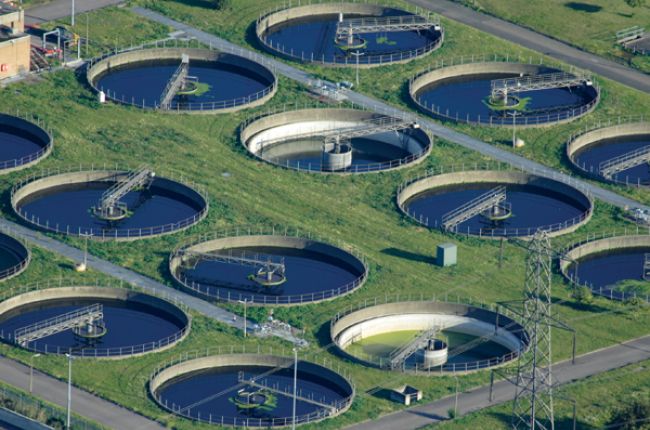Advanced Waste Water Treatment Solutions for Lasting Water Monitoring
Strategic Approaches to Improve Drainage Treatment Effectiveness and Decrease Environmental Impact
In the world of waste water treatment, the pursuit for boosted effectiveness and minimized environmental effect is a perpetual difficulty that requires critical options. The combination of sophisticated therapy innovations, energy-efficient processes, resource recuperation approaches, improved nutrient removal techniques, and smart surveillance and control systems represents a multifaceted structure for attending to these pushing issues.
Advanced Treatment Technologies
Advanced membrane purification systems have actually transformed innovative wastewater therapy processes, significantly improving the removal of impurities. These innovative systems function by requiring water via a semi-permeable membrane, successfully dividing impurities from the water stream. The membrane's tiny pores trap contaminants such as microorganisms, infections, and suspended solids, enabling just purified water to go through. This modern technology has verified to be highly reliable in removing a vast array of pollutants, consisting of pharmaceuticals, hefty metals, and natural compounds, which are often testing to eliminate via typical treatment techniques.
Furthermore, membrane filtering systems supply countless advantages over traditional treatment techniques. They require less room, create higher-quality effluent, and are extra resistant to fluctuations in influent water top quality. Additionally, these systems are very functional and can be easily incorporated right into existing therapy plants or made use of as standalone systems for decentralized applications. As the demand for tidy water remains to increase, the adoption of advanced membrane layer filtering technologies is necessary to guarantee effective and lasting wastewater therapy practices.
Energy-Efficient Procedures
The combination of energy-efficient procedures in wastewater therapy systems is critical for enhancing source use and decreasing functional prices. One key method to improving power performance in wastewater therapy is the utilization of advanced aeration systems, such as fine bubble diffusers or surface aerators, which can improve oxygen transfer effectiveness and minimize energy usage.
Moreover, maximizing procedure control and automation via the usage of innovative sensing units and monitoring systems can enhance overall energy efficiency by changing operations in real-time based on actual demand and conditions. Implementing energy audits and frequently checking power performance signs are vital methods to identify areas for improvement and track energy-saving initiatives effectively. Overall, the fostering of energy-efficient processes in wastewater treatment not only benefits the environment yet also contributes to long-lasting expense financial savings and functional sustainability.
Source Recovery Techniques
With a concentrate on enhancing resource usage and sustainability in wastewater treatment systems, the implementation of resource recovery strategies becomes an essential element in improving operational effectiveness. Resource recuperation strategies in wastewater treatment entail the recognition and extraction of useful sources from the waste stream, consequently turning what was when thought about waste into an important property. By applying source recovery techniques such as nutrient elimination and recovery, power generation from raw material, and the manufacturing of reusable water, wastewater treatment plants can lessen ecological effect while optimizing efficiency.

Enhanced Nutrient Elimination Techniques
Carrying out sophisticated nutrient removal strategies is essential for optimizing the performance of wastewater therapy systems. Improved nutrient removal plays an essential role in minimizing the ecological influence of treated effluent discharged right into water bodies. One of the vital strategies utilized for enhanced nutrient elimination is the process of organic nutrient elimination (BNR), which involves the removal of nitrogen and phosphorus with biological procedures. This can be accomplished through making use of specialized microbes that can convert nitrogen substances into inert nitrogen gas via denitrification, and build up phosphorus within their cells through a procedure called improved organic phosphorus removal (EBPR)

In enhancement to BNR, progressed treatment methods such as membrane layer bioreactors (MBRs) and constructed marshes can additionally be used to boost nutrient elimination performance. By integrating these innovative nutrient elimination methods into wastewater treatment industries, systems and districts can successfully reduce nutrient air pollution and safeguard the setting.
Smart Tracking and Control Equipment
Making use of cutting-edge technology, the assimilation of clever monitoring and control systems revolutionizes the operational efficiency of wastewater treatment centers. These systems include innovative sensing units and data analytics to constantly keep track of essential parameters such as pH levels, turbidity, dissolved oxygen, and flow prices in real-time. By accumulating website here and analyzing this data, drivers can acquire valuable understandings into the efficiency of the treatment procedures, enabling positive adjustments to maximize treatment performance.
Smart monitoring and control systems additionally support remote surveillance capabilities, permitting operators to accessibility real-time information and control functions from off-site areas. This imp source remote ease of access boosts operational adaptability and responsiveness, enabling speedy interventions in situation of system malfunctions or changes in influent quality. The anticipating maintenance abilities of these systems aid prevent equipment failings and decrease downtime, ultimately enhancing the total reliability of wastewater treatment procedures.
Conclusion
To conclude, calculated strategies such as sophisticated therapy innovations, energy-efficient procedures, resource recovery methods, enhanced nutrient removal strategies, and smart monitoring and control systems play a crucial function in improving wastewater therapy performance and minimizing environmental effect. By carrying out these strategies, wastewater therapy plants can boost their general efficiency, lower power consumption, recover important sources, and guarantee conformity with ecological policies. These techniques are essential for sustainable and efficient wastewater management methods.

In verdict, calculated approaches such as sophisticated therapy innovations, energy-efficient procedures, resource healing approaches, improved nutrient elimination techniques, and clever monitoring and control systems play an important role in boosting wastewater treatment performance and reducing ecological effect.